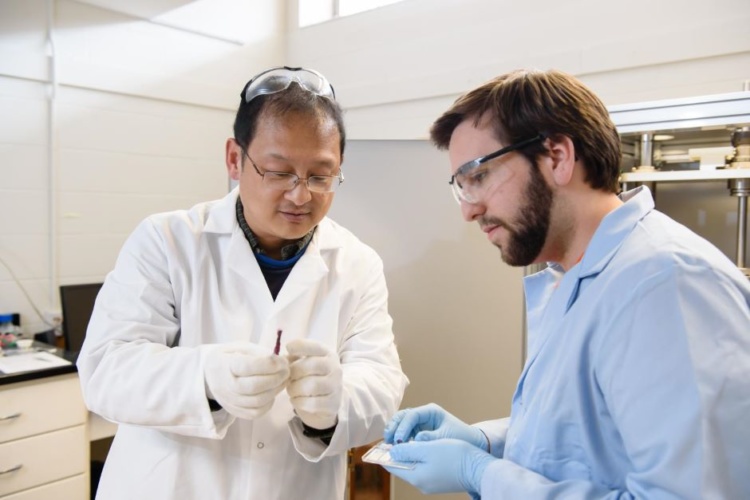
Jian He, a researcher at Clemson University, South Carolina and colleagues from China and Denmark created the new hybrid compound in which the crystalline and amorphous sublattices are intertwined into a one-of-a-kind crystal-amorphic duality.
CLICK HERE FOR MORE FROM MATERIALS
"Our material is a unique hybrid atomic structure with half being crystalline and half amorphous," said He, an associate professor in the College of Science's Department of Physics and Astronomy. "If you have a unique or peculiar atomic structure, you would expect to see very unusual properties because properties follow structure."
The team’s findings have been published online in Joule.
According to Clemson, the researchers created their hybrid material by mixing elements in the same group on the periodic table but with different atomic sizes. For their research, the team used the atomic size mismatches between sulphur and tellurium and between copper and silver to create a new compound (Cu1-xAgx)2(Te1-ySy) in which the crystalline and amorphous sublattices intertwine into a one-of-a-kind crystal-amorphicity duality. The new compound is said to have exhibited excellent thermoelectric performance.
While this discovery does bot directly impact application now, it is expected to lead to better thermoelectrics in the future.
"The new material performs well, but more important than that is how it achieves that level of performance," He said in a statement. "Traditionally, thermoelectric materials are crystals. Our material is not pure crystal, and we show we can achieve the same level of performance with a material with a new atomic structure."
He said the new material will begin affecting applications in 10 to 20 years.
"They definitely can do something current thermoelectric materials cannot do, but not now," He said. "However, the future of this research is bright."
In addition to He, the research involved scientists from Shanghai Jiaotong University, Shanghai Institute of Ceramics and SUSTech in China, and Aarhus University in Denmark.










Invinity to build 20MWh flow battery in UK
Redux flow cells have had nowhere near the R+D effort compared to Lithium ion. They certainly have the potential (pun not intended) for longer...